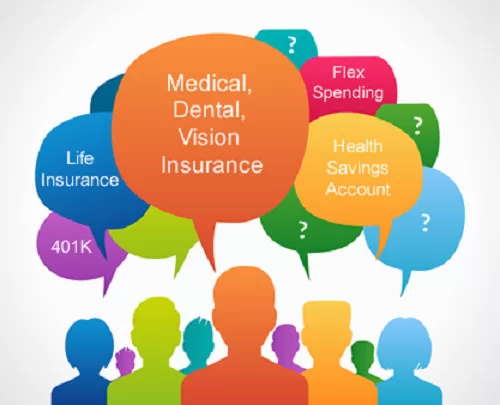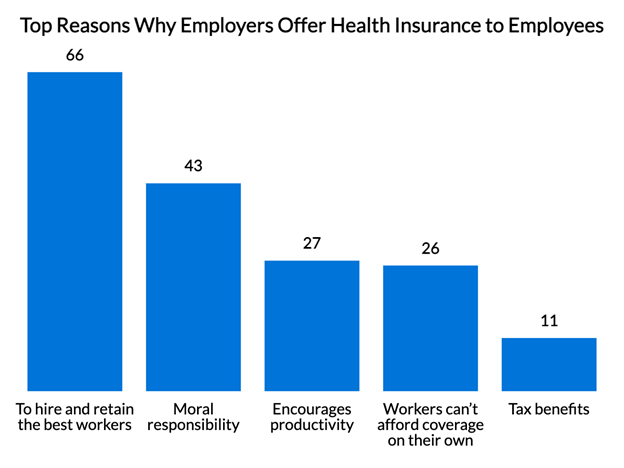The 8-Second Trick For Medicare Advantage Agent
The 2-Minute Rule for Medicare Advantage Agent
Table of ContentsAll About Medicare Advantage AgentThe smart Trick of Medicare Advantage Agent That Nobody is DiscussingRumored Buzz on Medicare Advantage Agent

adheres to from perplexing the reasonably young age account of the uninsured with the far better wellness, on average, of more youthful persons. This covers the web link between wellness standing and health insurance. For those without access to work environment health insurance, bad health is a prospective barrier to acquiring nongroup protection due to the fact that such coverage might be highly valued, omit preexisting conditions, or be just unavailable. The number of uninsured Americans is not particularly huge and has actually not altered in current years. Seven out of ten participants in a nationally depictive survey thought that fewer Americans lacked medical insurance than actually do(Fronstin, 1998). About fifty percent(47 percent )believed that the number of people without medical insurance reduced or remained consistent over the last fifty percent of the last years(Blendon et al., 1999). This drop of virtually 2 million in the variety of individuals 'without insurance policy (a decrease
of about 4 percent)is definitely a positive change. With a softer economy in 2000 the most recent reported gains in insurance coverage might not continue(Fronstin, 2001 ). The decline in the number of without insurance will not continue if the economic situation stays sluggish and health care prices remain to outmatch rising cost of living. This is since the data were gathered for a duration of solid financial efficiency. Of the estimated 42 million people that were without insurance, just about about 420,000(concerning 1 percent)were under 65 years of age, the age at which most Americans come to be eligible for Medicare; 32 million were grownups between ages 18 and 65, about 19 percent of all grownups in this age; and 10 million were children under 18 years of age, regarding 13.9 percent of all children (Mills, 2000). These price quotes of the number of individuals without insurance are produced from the yearly March Supplement to the Current Populace Study (CPS), carried out by the Demographics Bureau. Unless or else noted, nationwide price quotes of individuals without medical insurance and proportions of the populace with different kinds of coverage are based upon the CPS, one of the most extensively used source of estimates of insurance coverage and uninsurance prices. These surveys and the price quotes they generate are defined briefly in Table B. 1 in Appendix B - Medicare Advantage Agent. These studies differ in size and tasting methods, the concerns that are inquired about insurance coverage
The 10-Minute Rule for Medicare Advantage Agent
protection, and the moment duration over which insurance coverage or uninsurance is determined(Lewis et al., 1998, Fronstin, 2000a ). Still, the CPS is especially valuable since it produces yearly price quotes relatively rapidly, reporting the previous year's insurance policy coverage approximates each September, and due to the fact that it is the basis for a regular collection of quotes for more than two decades, permitting analysis of patterns in insurance coverage with time.

Medicare Advantage Agent Can Be Fun For Everyone
Over a three-year duration starting early in 1993, 72 million people, 29 percent of the U.S. population, lacked protection for at the very least one month. Within a single year(1994), 53 million individuals experienced a minimum of a month without insurance coverage(Bennefield, 1998a). 6 out of every 10 without insurance grownups are themselves utilized. Functioning does enhance the possibility that one and one's household participants will have insurance, it is not an assurance. Even participants of households with 2 permanent breadwinner have almost a Bonuses one-in-ten possibility of being without insurance (9.1 percent without insurance rate)(Hoffman and Pohl, 2000 ). The connection in between medical insurance and accessibility to care is well established, as recorded later on in this chapter. Although the relationship between health and wellness insurance and health results is neither straight nor straightforward, a comprehensive professional and health solutions research literature links health insurance policy coverage
to better accessibility to care, far better quality, and improved personal and populace health status. The 2nd record, on individual health results for without insurance grownups, is stood for by the inner circle of the number, while the third report, on family members well-being, encompasses the topics of the second report yet emphasizes a different system of evaluation, particularly, the family. The 6th report in the collection will certainly provide information regarding methods and campaigns embarked on locally, statewide, or across the country to address the lack of insurance and its unfavorable effects. Degrees of analysis for examining the impacts of uninsurance. This discussion of wellness insurance coverage focuses primarily on the united state populace under my blog age 65 since practically all Americans 65 and older have Medicare or various other public insurance coverage.
Furthermore, it concentrates particularly on those without any medical insurance home for any type of size of time. The problems faced by the underinsured are in some areas similar to those faced by the uninsured, although they are generally less extreme. Uninsurance and underinsurance, nevertheless, involve noticeably different plan problems, and the methods for addressing them might differ. Throughout this study and the five reports to adhere to, the primary emphasis gets on persons without any wellness insurance and therefore no help in spending for healthcare beyond what is offered with charity and safeguard institutions. Wellness insurance is an effective variable affecting invoice of care because both people and doctors reply to the out-of-pocket cost of services. Medical insurance, nonetheless, is neither required neither sufficient to gain accessibility to medical solutions. The independent and direct impact of wellness
insurance insurance policy on access to health wellness solutions well established. Others will certainly obtain the healthcare they need even without health and wellness insurance, by paying for it expense or seeking it from suppliers that provide treatment complimentary or at highly subsidized prices. For still others, health insurance coverage alone does not make sure invoice of treatment as a result of various other nonfinancial obstacles, such as an absence of healthcare service providers in their neighborhood, restricted accessibility to transport, illiteracy, or linguistic and social distinctions. Formal study about uninsured populaces in the United States dates to the late 1920s and very early 1930s when the Board on the Expense of Healthcare generated a series of reports concerning financing physician workplace check outs and hospital stays. This issue came to be salient as the numbers of clinically indigent climbed throughout the Great Clinical depression. Empirical researches consistently sustain the web link in between accessibility to care and improved health results(Bindman et al., 1995; Starfield, 1995 ). Having a routine source of treatment can be thought about a predictor of gain access to, as opposed to a straight procedure of it, when wellness results are themselves made use of as accessibility indicators. This extension of the idea of gain access to dimension was made by the IOM Committee on Keeping An Eye On Access to Personal Healthcare Provider(Millman, 1993, p. Whether moms and dads are guaranteed shows up to impact whether their children get treatment in addition to just how much careeven if the youngsters themselves have protection(Hanson, 1998). The wellness of moms and dads can influence their ability to take care of their kids and the level of family members tension. Bothering with their youngsters's access to care is itself a source of stress and anxiety for moms and dads. Three phases follow in this report. Chapter 2 supplies an overview of just how employment-based wellness insurance policy, public programs and individual insurance plan run and interact to offer considerable but incomplete protection of the united state populace. This includes a testimonial of historic fads and public laws impacting both public and exclusive insurance, a conversation of the communications among the various sorts of insurance policy, and an assessment of why people move from one program to an additional or wind up
